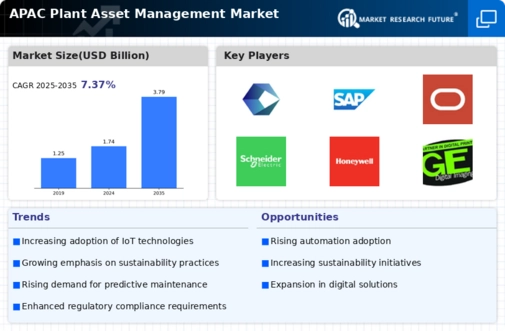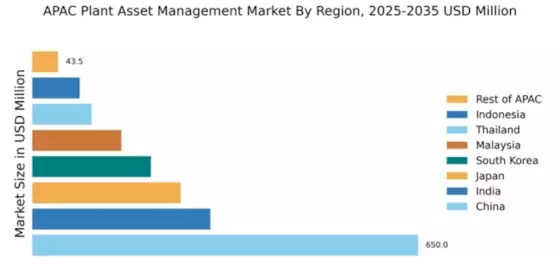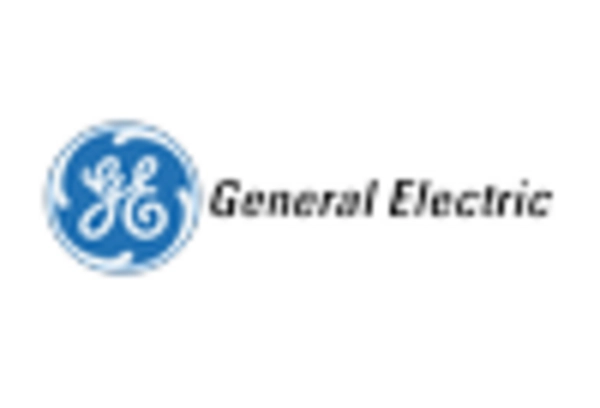Shift Towards Digital Transformation
The shift towards digital transformation is profoundly impacting the plant asset-management market in APAC. Organizations are increasingly adopting digital tools and platforms to enhance their asset management capabilities. This transformation is driven by the need for real-time data access, improved decision-making, and enhanced collaboration across teams. As companies embrace digital solutions, the market is anticipated to grow at a rate of 12% annually. The integration of digital technologies not only streamlines asset management processes but also fosters innovation and agility within organizations. This trend indicates a promising future for the plant asset-management market as businesses seek to leverage digital advancements for competitive advantage.
Investment in Infrastructure Development
The ongoing investment in infrastructure development across APAC is a significant driver for the plant asset-management market. Governments and private sectors are channeling substantial funds into infrastructure projects, which necessitate effective asset management practices. This trend is particularly evident in sectors such as energy, transportation, and manufacturing, where the need for reliable asset management systems is paramount. The market is projected to grow as these sectors seek to optimize their asset lifecycles and enhance operational performance. With infrastructure spending expected to reach $5 trillion by 2030 in the region, the demand for robust asset management solutions is likely to increase, positioning the industry for substantial growth.
Rising Demand for Operational Efficiency
The plant asset-management market in APAC is experiencing a notable surge in demand for operational efficiency. Industries are increasingly recognizing the need to optimize asset utilization and reduce downtime. This trend is driven by the growing competition and the necessity to enhance productivity. According to recent data, organizations that implement effective asset management strategies can achieve up to 20% improvement in operational efficiency. This focus on efficiency is likely to propel investments in advanced asset management solutions, thereby fostering growth in the plant asset-management market. As companies strive to streamline their operations, the adoption of innovative technologies and methodologies becomes imperative, indicating a robust future for the industry.
Regulatory Compliance and Safety Standards
In APAC, stringent regulatory compliance and safety standards are significantly influencing the plant asset-management market. Governments are enforcing regulations that mandate the maintenance and monitoring of industrial assets to ensure safety and environmental protection. This regulatory landscape compels organizations to invest in comprehensive asset management systems that can facilitate compliance. The market is projected to grow as companies seek solutions that not only meet regulatory requirements but also enhance safety protocols. The financial implications are substantial, with non-compliance potentially leading to fines exceeding $1 million in severe cases. Thus, the emphasis on compliance is a critical driver for the plant asset-management market.
Technological Advancements in Asset Monitoring
Technological advancements are reshaping the plant asset-management market in APAC. The integration of advanced monitoring technologies, such as predictive analytics and machine learning, is enabling organizations to gain deeper insights into asset performance. These innovations facilitate proactive maintenance strategies, reducing unexpected failures and associated costs. The market is expected to witness a growth rate of approximately 15% annually as companies increasingly adopt these technologies. Enhanced monitoring capabilities not only improve asset reliability but also contribute to overall operational excellence, making this a pivotal driver for the industry. As organizations prioritize data-driven decision-making, the demand for sophisticated asset management solutions is likely to escalate.


















Leave a Comment